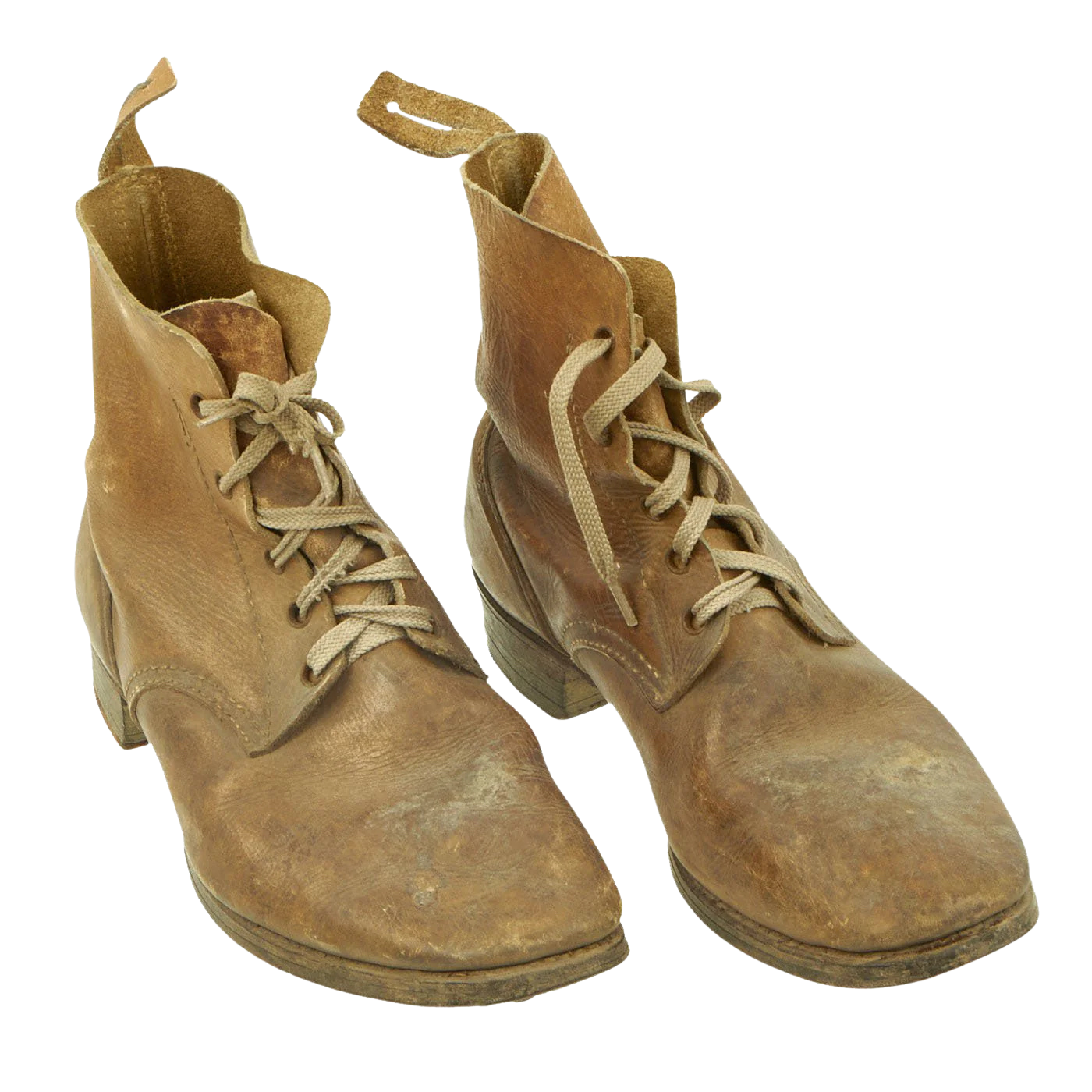Thailand’s Bootmaking History
Bootmaking in Thailand has a rich history that intertwines with the broader narrative of the country's development, influenced by cultural exchanges and evolving demands. This might seem odd since the actual wearing of shoes was not widespread until the 1930s.
The origins of bootmaking in Thailand can be traced back to traditional Thai shoemaking, which was initially centered around simple, functional footwear crafted by local artisans. These early shoes were often made from natural materials like leather and textiles, designed to suit the tropical climate and the agrarian lifestyle in Thailand. And the descendants of those early artisan shoe makers still carry on the craft today.
The WWII Boot That Changed The Industry!
The next wave of evolution in Thailand's bootmaking industry took place during World War II, when Japan occupied Thailand from 1941 until the end of World War II in 1945. During this time, there were significant resource shortages and economic hardships. Materials for bootmaking, such as leather and rubber, were often requisitioned by the Japanese military, leading to scarcities for civilian industries. Additionally, the focus on military production meant that many traditional and civilian bootmaking operations suffered from neglect or were repurposed entirely to meet military needs
Through the Japanese occupation of Thailand, countless pairs of these boots were made by Thai bootmaking workshops, and of course, even more were repaired by cobbler shops that sprang up around the country. Many street cobblers still exist throughout the country even today.
In 1945, after Japan’s surrender and withdrawal from Thailand, the workshops that were forced to convert and make Japanese army boots shifted their focus to making shoes and boots that would better serve the local economy. While many shifted back to making more local footwear, some remained focused on boot production, building on their generations of craftsmanship and newfound bootmaking expertise.
The Third Wave of Bootmaking in Thailand
These same hand-crafted techniques that were established early on still persist today in Thailand's bootmaking industry. While there has been a shift to more modern techniques for many of the mass-produced boots and shoes, there is still a strong foundation of hand craftsmanship all around Thailand.
Like many traditional crafts in Thailand, the craft of bootmaking is a deeply rooted tradition, passed down through generations, preserving both the cultural heritage and artisanal skills of the Thai people. This legacy is sustained by family-run workshops and dedicated communities where skills are meticulously handed down from master to apprentice, often within the same family.
In traditional Thai bootmaking families, the knowledge and techniques of the craft are typically inherited through a hands-on apprenticeship model. Children grow up observing their elders at work, absorbing the nuances of the craft from an early age. This early exposure is crucial as it instills a deep appreciation and understanding of the intricate processes involved in bootmaking. Skills are often taught informally at first, with young family members assisting with simple tasks such as cutting leather or polishing finished products.
As they mature, apprentices take on more complex responsibilities under the watchful eyes of their mentors. This gradual increase in responsibility ensures that each new generation masters every step of the process, from selecting high-quality materials to the precise stitching and assembly of the boots. The emphasis on perfection and attention to detail is paramount, reflecting a dedication to maintaining the high standards set by previous generations.
The Future of Bootmaking in Thailand
Workshops often serve as both the production site and the training ground, creating an environment where learning is continuous and collaborative. Techniques and styles may evolve with each generation, incorporating new influences and innovations, but the core principles and traditional methods remain steadfast. This blend of tradition and innovation helps keep the craft relevant in a modern market while honoring its historical roots.
At Naang Boots, our workshop is stacked with many multi-generation bootmakers, and we have taken steps to formalize the transmission of their skills through structured training programs in our workshop. These initiatives aim to attract younger generations and ensure the longevity of the craft. By blending traditional apprenticeship with formal education, this provides a comprehensive learning experience that honors the past while preparing for the future.
Bootmaking in Thailand is preserved through a combination of familial apprenticeship, community involvement, and evolving educational initiatives. Naang Boots is honored to be part of this multifaceted approach that ensures the rich heritage and artisanal excellence of Thai bootmaking continue to thrive, passing from one generation to the next with the same passion and dedication that have defined it for decades.
